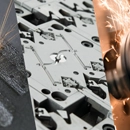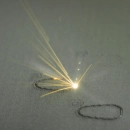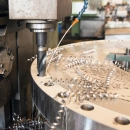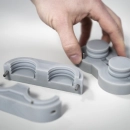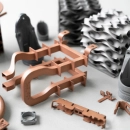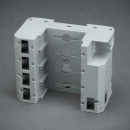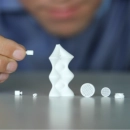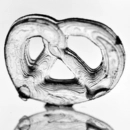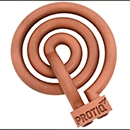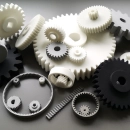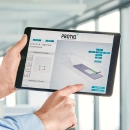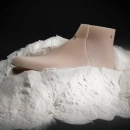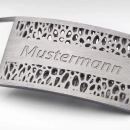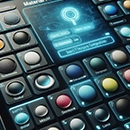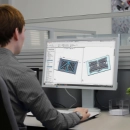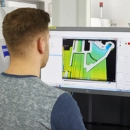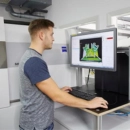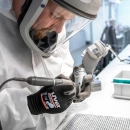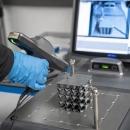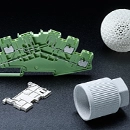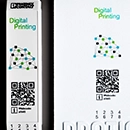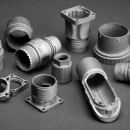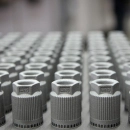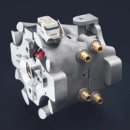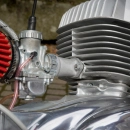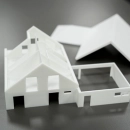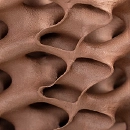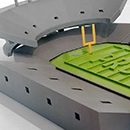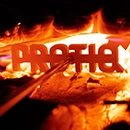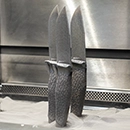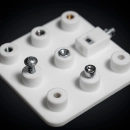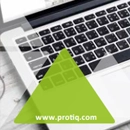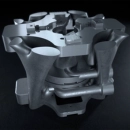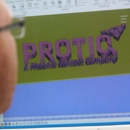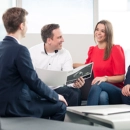Surface textures in 3D printing
Surface structures in 3D printing
Powder-based 3D printing - especially in processes such as selective laser sintering (SLS) and multi-jet fusion (MJF) - produces components with a naturally rough and even surface texture. The feel of this standard surface is reminiscent of fine sandpaper and is sufficient for many technical applications. However, the possibilities go far beyond this: surfaces can be specifically designed as early as the design phase to achieve functional and aesthetic benefits.
Textures and structures can be added to customize 3D-printed components. These include patterns, grids or reliefs that not only change the appearance, but can also take on practical functions - for example, better grip, control of friction properties or optical effects through targeted light refraction. This opens up additional design scope for developers and designers: the surface becomes an active design element that can influence both technical performance and visual impact.
Why is MJF particularly suitable for surface structures?
The Multi Jet Fusion (MJF) process is ideal for adding complex structures and textures directly to components - without any significant impact on production time. Even when surfaces contain detailed patterns or reliefs, the printing process remains fast and efficient.
One reason for this lies in the way MJF works: the surfaces are prepared with fusing and detail agents, which are fused in a uniform work step. This means that even fine surface features can be reproduced with high precision and repeat accuracy without the need for additional process steps.
MJF thus opens up the possibility of using surface design as an integral part of the construction - whether for improved haptics, optimized function or a striking visual design.
What is possible?
- Grip structures – e.g. ribbing or nubs for better handling
- Friction control – specific surface patterns to increase or reduce friction
- Optical effects – reliefs, patterns or grids for characteristic light and shadow effects
- Branding elements – logos, lettering or design elements directly on the component surface
- Functional microstructures – e.g. to drain liquids, guide air or reduce contact surfaces
Surfaces in 3D printing: practical examples
The targeted design of surface structures in 3D printing opens up numerous possibilities that go far beyond a purely visual effect. Structures can already be taken into account in the component design and printed directly - without any additional processing steps. This creates a great deal of scope for using surfaces both functionally and aesthetically.
A common area of application is housings and operating elements, where non-slip surfaces ensure better handling. Instead of resorting to subsequent coatings or additional materials, the desired grip can be achieved directly through integrated structures in 3D printing. Handles, rotary knobs or control buttons also benefit from customized textures that improve ergonomics and safety.
In the area of visible components, the design aspect comes into play: logos, lettering or decorative patterns can be incorporated into the surface and make products unmistakable. This not only strengthens the branding, but also saves further production steps such as engraving or embossing.
Furthermore, specific textures can also be used to implement technical functions. Surface patterns can specifically increase or reduce friction, divert liquids in a certain direction or influence air flows. Optical effects such as light and shadow effects can also be created using reliefs or grids and specifically integrated into the product design.
Structures as a design element in product design
Surface structures in 3D printing are not only functional properties, but can also be used specifically as a design element in product design. 3D-printed textures can be used to enhance products and differentiate them from one another - without any additional production steps. Logos, lettering or characteristic patterns can be integrated directly into the surface, making a visible contribution to the brand identity.
In addition to this design dimension, textures also offer the possibility of creating aesthetic effects. Reliefs, grids or fine patterns influence how light and shadow affect a surface, giving components depth and individuality. The surface thus becomes a deliberate part of the design, shaping the visual perception and feel in equal measure.
Textures also offer a clear advantage in prototyping: different surface variants can be implemented directly and tested in practical use - from ergonomics to functionality and visual effect. This means that design decisions can be well-founded and quickly transferred to product development.
With 3D-printed structures, this creates additional scope for design that makes products more functional, striking and individual.
Frequently asked questions about textures in 3D printing
Which structures can be realized in 3D printing?
Why are surface structures particularly helpful in prototyping?
In prototyping, structures and textures can be used to quickly implement and test different design variants. For example, haptics, ergonomics and visual effects can be realistically evaluated before series production begins. The advantage: changes to the surface design can be made easily in the CAD model and checked directly in the next 3D print - without tool costs or long lead times.
Can complex structures also be used in series production?
What are the advantages of 3D-printed structures over traditional methods?
The biggest advantage lies in the freedom of design: structures in 3D printing are implemented directly from the CAD model without the need for special tools or molds. This allows patterns, reliefs or logos to be created, even in complex geometries that would be difficult or impossible to achieve using conventional processes such as milling, engraving or injection molding. Companies also save time and money, as no additional processing steps are required and design changes can be easily implemented at any time.
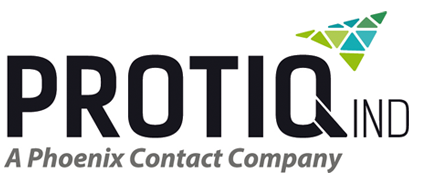


 Deutsch
Deutsch English
English Italiano
Italiano